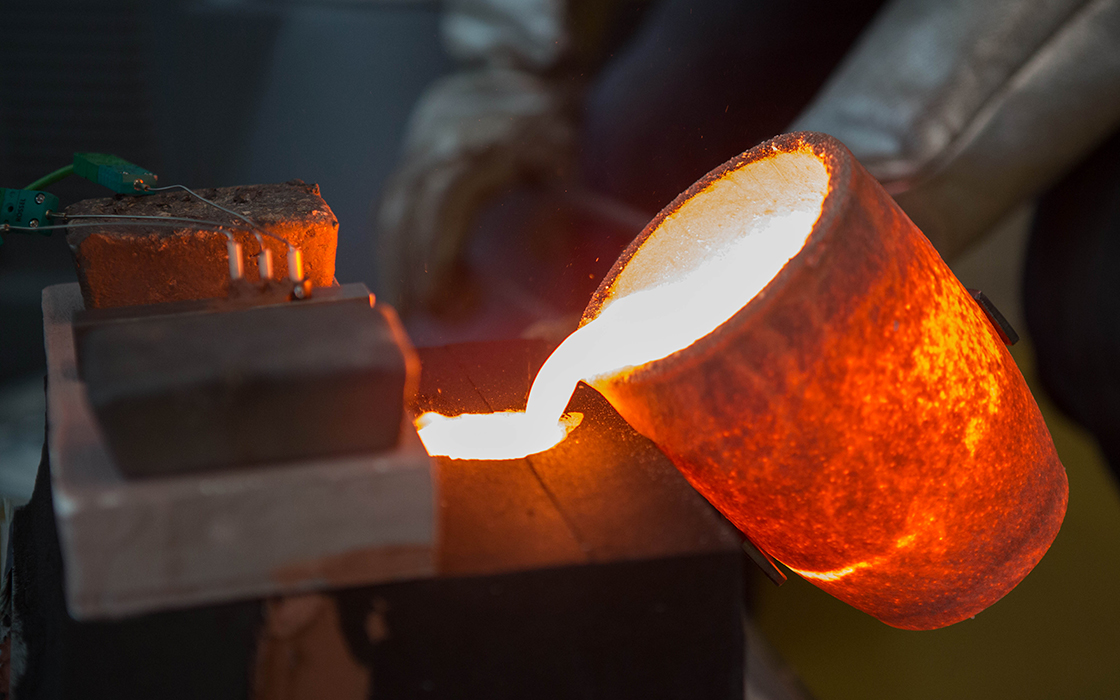Casting simulation and experimental validation of active air cooling of cast parts
Large cast parts for gas or steam turbines or engines need days or even weeks to solidify and cool down.
Objective
The objective of the research project is to halve the cooling-down time for a large cast part in a sand mould, which is several days, with a new, controlled cooling method using air, while maintaining the cast quality.
Starting situation
To reduce the cooling-down time for cast parts, more heat must be dissipated. An active cooling procedure would be used for this. Because of this requirement, a reliable prediction of the cooling effect must be possible by means of simulation, to clarify the benefit of the additional effort of actively cooling various large cast parts in advance and of designing these parts. The thermal energy dissipated by the active system is to be mathematically predicted by cast simulation software, up to the temperature on removal from the mould.
Result
The potential of actively cooling sand castings was proven in the project on the laboratory scale and in a large casting. Through active cooling, the following improvements could be achieved in solidification and further cooling down:
- Reduction of the cooling time up to removal from the mould by 67% by means of actively cooled iron moulds in the laboratory test
- Active influence on the solidification process and the hot zones on the part, which means that complex geometries can be achieved more easily using casting techniques
- Finer structure and improved mechanical characteristics
- Reduction of casting defects
Projekt-Information
Client | |
Execution | FHNW Institute of Thermo- and Fluid-Engineering, FHNW Institute of Product and Production Engineering , Giesserei-Zentrum FHNW |
Partner | |
Duration | 3 Years |
Sponsorship | |
Team | FHNW: Prof. Dr. Norbert Hofmann, Prof. Dr. Jörg Lagemann, Erwin Eichelberger, Andreas Matt, Thomas Burbach, Christian Kähr, Ralph Amhof |
Benninger: Eric von Ballmoos, Urs Augustin | |
MAC: Markus Albert, Dieter Jurczik |

